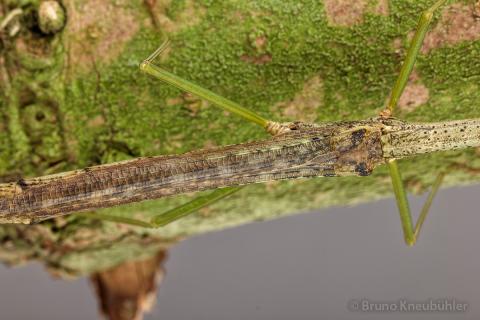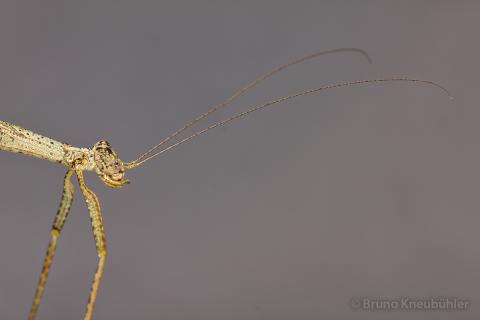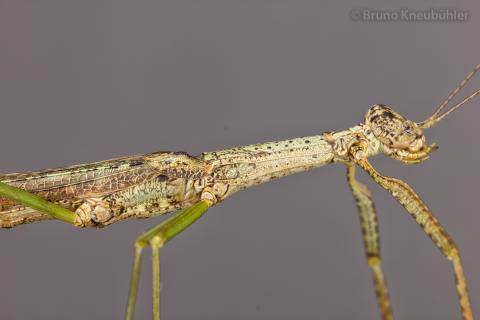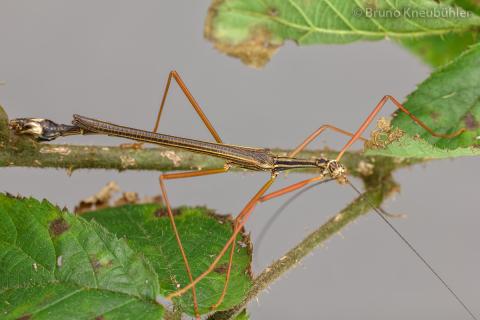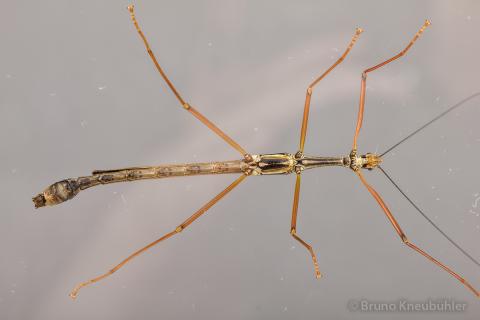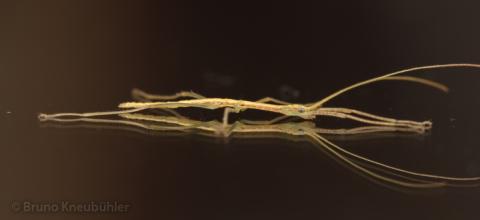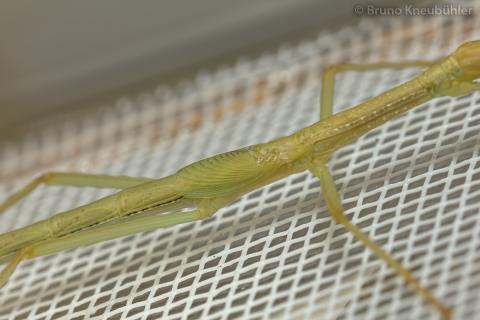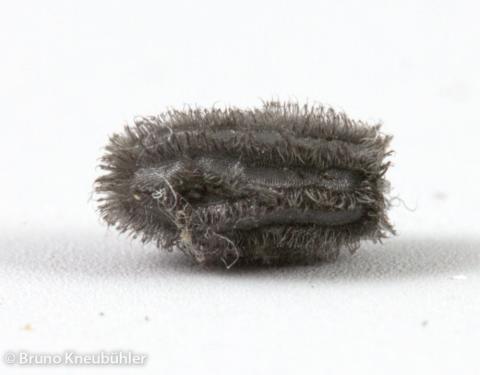
Genus
Species
Stock
Culture status
Unknown
Foodplants
Bramble (Rubus spp.)
Breeding notes
(by Bruno Kneubuehler)
General Notes
- 2012 – taxonomical aspects of this species are being examined by Joachim Bresseel (Belgium)
- 2012 – first successful culture by Bruno Kneubuehler (Switzerland)
- 2012 – has been distributed as Necrosciinae sp. „Tam Dao Temple“
- 2013 - this species belongs to the genus Parasinophasma (Joachim Bresseel, pers. comm.)
_________________
Origin
- Tam Dao National Park, Vietnam
_________________
Females
- winged, medium sized phasmids
- about 8.5 cm long
- different brown shades
- middle- and hindlegs green
- fully winged
- antennae longer than forelegs
_________________
Males
- pretty phasmids
- about 6.5 cm long
- contrasty brown-black-white coloration
- red-brown legs
- fully winged
- antennae longer than forelegs
_________________
Nymphs
- about 11 mm (L1)
- yellow-green (L1)
- antennae already longer than forelegs (L1)
- by L3 it is quite easy to draw a distinction between ♀♂ (by the naked eye)
_________________
Eggs
- small
- about 3 x 1 mm
- grey-brown
- matt
- very hairy
- lengthwise fringe structures
- capitulum small
- micropylar plate small and drop shaped
- elongate-oval
_________________
Food Plants
- bramble (Rubus sp.)
is very well accepted by freshly hatched nymphs, older nymphs and adults
_________________
Behaviour
- adults are sometimes active during the day
- both males and females fly very well
- adult males can behave very frantically when being touched
- matings are frequent at night, couples stay together for some hours at the most
_________________
Developement
- incubation time (HH-incubation on slightly damp sand at 20 - 23 °C) is about 5.5 months (F1)
- spread some dried (!) moss over the eggs - this will make it much easier for the nymphs to hatch unscathed and it also reduces mould growth to some extend
- hatching ratio in F1 was very high (> 50%)
- males will be adult after about 2 months (at 20 – 23°C), females after about 3 months
- females start laying eggs after about 2 – 3 weeks
- eggs are flinged away with a swing of the abodmen
- about 25eggs per female and week
- adults can live for several months
_________________
Breeding Notes
- my general notes on how to breed phasmids are a integral part of this care sheet ...
- it is very easy to breed this species
- an easy to keep and interesting species
- as the freshly hatched nymphs are already quite big, therefore the incubation container should be big enough
- keep the nymphs in a cage with good ventilation, but take care that the humidity does not drop too low
- a constantly wet paper towel on the floor of the cage helps raising humidity
- a humidity level of about 60 – 65 % rH seems to be sufficient
- nymphs can be kept in a Faunabox (or similar cages)
- move nymphs to a bigger cage as they grow bigger
- as the adults are rather big, a cage of at least 30 x 30 x 30 cm should be provided for some couples of this species (or considerably larger if the cage also contains other species !)
- generally I advise to keep different phasmid species seperately (unfortunately, overcrowed cages are still very common ...)
- I have never sprayed nymphs or adults (or their cage) with water
- make shure that nymphs, which are about to undergo their adult moult, do not find places in the cage which would not offer them enough space beneath to moult successfully


